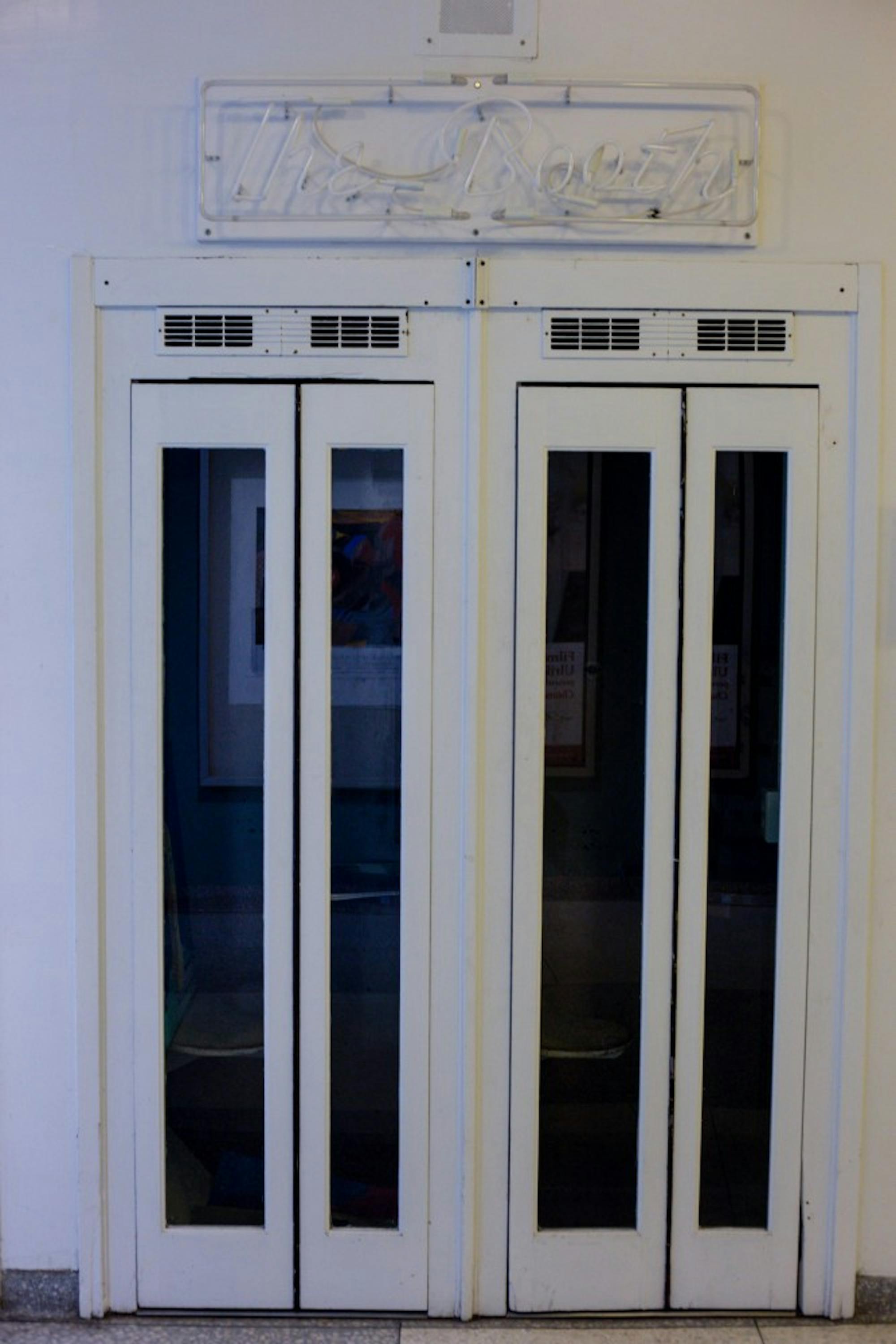Across from the Hinman boxes in the Hopkins Center for the Arts stand a pair of twin phone booths, which have remained out of service and neglected for years. According to student curator Jamie Park ‘20, this fall, the booths will be repurposed into a student art exhibit titled The Booth, shining a spotlight on student artwork in a space that more often highlights the work of visiting artists.
Hopkins Center donor relations officer Sherry Fiore said that student interest for a place to display their artwork and alumni support for student art projects helped her develop the idea for The Booth.
“The Hopkins Center is an arts center, and I thought there was an opportunity to have some more art in the building,” she said.
With the repurposing of the phone booths, Fiore envisioned what she described as a “student-curated space that could be used to show student art in a sort of funky, kind of interesting way.” Park added that The Booth brings student art to the forefront in a space that generally does not provide students, especially non-studio art majors, opportunities to display their artwork. Senior seminar shows and class-related exhibits open doors for students to showcase their art, but the Hopkins Center tends to favor the work of visiting artists over that of students, Park said.
“We have access to so many cool artists,” Park said.“But there’s definitely less of a venue for students to show their artwork.”
Eric Wang ’20, one of this term’s featured artists, exemplifies this lack of opportunity; although he has exhibited artwork in the hallways of the Black Family Visual Arts Center, he has never showcased any pieces in the Hopkins Center, which he said “isn’t very good about” displaying student art.
Through expanding access to student art displays within the Hopkins Center, The Booth creates a space “where students’ work can be celebrated and receive some attention,” Wang said. “I hope to see student work permeate other parts of campus as well,” he added.
In curating The Booth, Park wants to diversify the number of people and the types of people who have the privilege to display their artwork.
“A lot of the times, people of underprivileged communities are the ones that are underserved in having the opportunities to show their artwork,” she said. “That’s kind of who I want to give these opportunities to.”
Fiore added that the central location of The Booth, an area heavily traversed by students accessing their mail or dining at Courtyard Café, helps cultivate a unique, more informal gallery experience for viewers.
“It’s not going to be a big time commitment to come and see,” Fiore said. “As you’re walking by, you can interact with it and keep going.”
Wang agreed, emphasizing that “people walk through that hallway all the time … I’m sure it’s very easy to stop and take a look, even for just a few seconds.”
Last fall, Fiore reached out to Park, a studio art major, to curate the new exhibit. As student curator, Park said she manages the development of the project: lining up student artists, documenting the exhibits and figuring out how to mount, frame and position the artwork. After looking at a student’s portfolio of work, Park selects pieces that work well together, conveying a certain theme.
“I like to make sure that different mediums are introduced between the two booths,” Park said, describing her curation process. “I get their work and I put it up unofficially … and then I pair it with another artist whose work contrasts with that work well enough so that both can stand out.”
Although the size of the phone booths may appear to restrict the types of artwork available to showcase, Park said the dimensions of The Booth have not been an issue so far.
“It seems like a tiny space, which it is,” Park said. “[But] a lot of bigger pieces do fit in there because there’s a lot more wall space than I think people imagined.”
According to Park, this term’s exhibit will feature pastels and oil paints on the left side of The Booth and photography on the right. Wang will display two self-portraits, a few still lifes and a figure drawing.
“There’s a strong focus on mark-making,” Wang said, referring to the theme Park curated from his body of work.
The upcoming exhibit, centered around this theme, will open in a few weeks, and artwork by two artists will be exhibited bi-termly starting in the winter term. According to Park, students can reach out to Park to inquire about displaying their art in The Booth during successive terms.
Regarding future development of The Booth, Fiore said she hopes that it will eventually feature a multimedia element, show-casing artwork with video or audio pieces, which would broaden the diversity of the mediums on display.
Park expressed high hopes for The Booth’s long-term future as well.
“I hope that this continues,” she said. “I think this is a wonderful space.”




